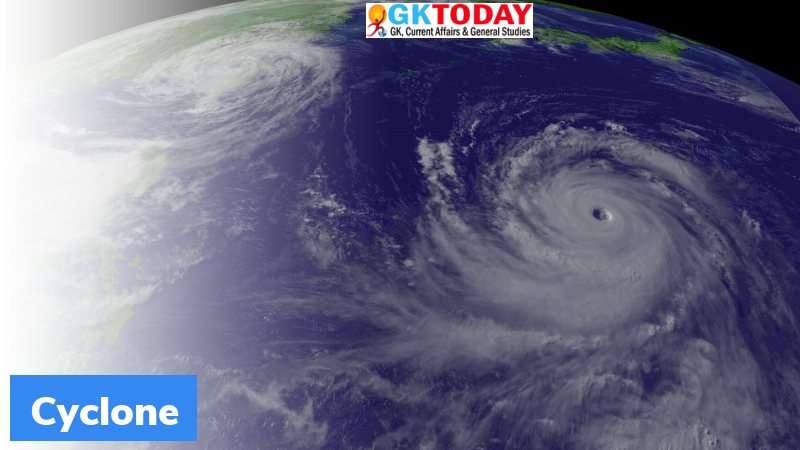Cyclone Barsirai
On February 6, 2022, Cyclone Barsirai made landfall on coast of Madagascar, killing at least six people. It was an intense tropical cyclone.
Highlights
- Cyclone had the packing winds of 235 km/h.
- It struck the Mananjary district, which is around 530 kilometres southeast of the capital Antananarivo.
- It has resulted into widespread damage by blowing the roofs off homes, and knocking down utility poles & trees. City of Nosy Varika is almost 95% destroyed.
- As per disaster management agency of Madagascar, about 48,000 people moved to emergency accommodation.
Second storm to hit nation
Cyclone Batsirai is the second major storm, hitting the island nation in less than two weeks. In January 2022, Storm Ana caused widespread destruction and death to 55 people. It also forced tens of thousands of people out from their homes.
Loss estimates by World Food Programme
The World Food Programme cited estimates from national authorities. It highlighted that, cyclone Batsirai could directly affect 595,000 people and 150,000 more might be displaced because of new flooding and landslides. It poses a risk to at least 4.4 million people.
Impact of Global Warming
The former French colony, located off Africa’s south-eastern coast, is in the midst of six-month rainy season. It often results in widespread damage and casualties. In 2018, Madagascar was suffered with Cyclone Ava killing 51 people and tropical storm Eliakim killing 20 people. In March 2017, 78 people killed in Cyclone Enawo. Risk of tropical storms and flooding has increased due to Global warming, because atmosphere retains more water and rainfall patterns are disrupted. On the other hand, Southern Madagascar is reeling from worst drought in four decades.
About Madagascar
Madagascar is an island country in Indian Ocean. It is located approximately 400 kilometres, off the coast of East Africa across Mozambique Channel. It is world’s second largest island country while world’s fourth largest island. It comprises of island of Madagascar and several smaller peripheral islands. Madagascar got separated from Indian subcontinent around 88 million years ago. The split allowed native plants and animals to evolve in relative isolation. Thus, Madagascar has become a biodiversity hotspot. More than 90% of wildlife of the island is found nowhere else on Earth.
Month: Current Affairs - February, 2022
Category: Environment Current Affairs • International / World Current Affairs


